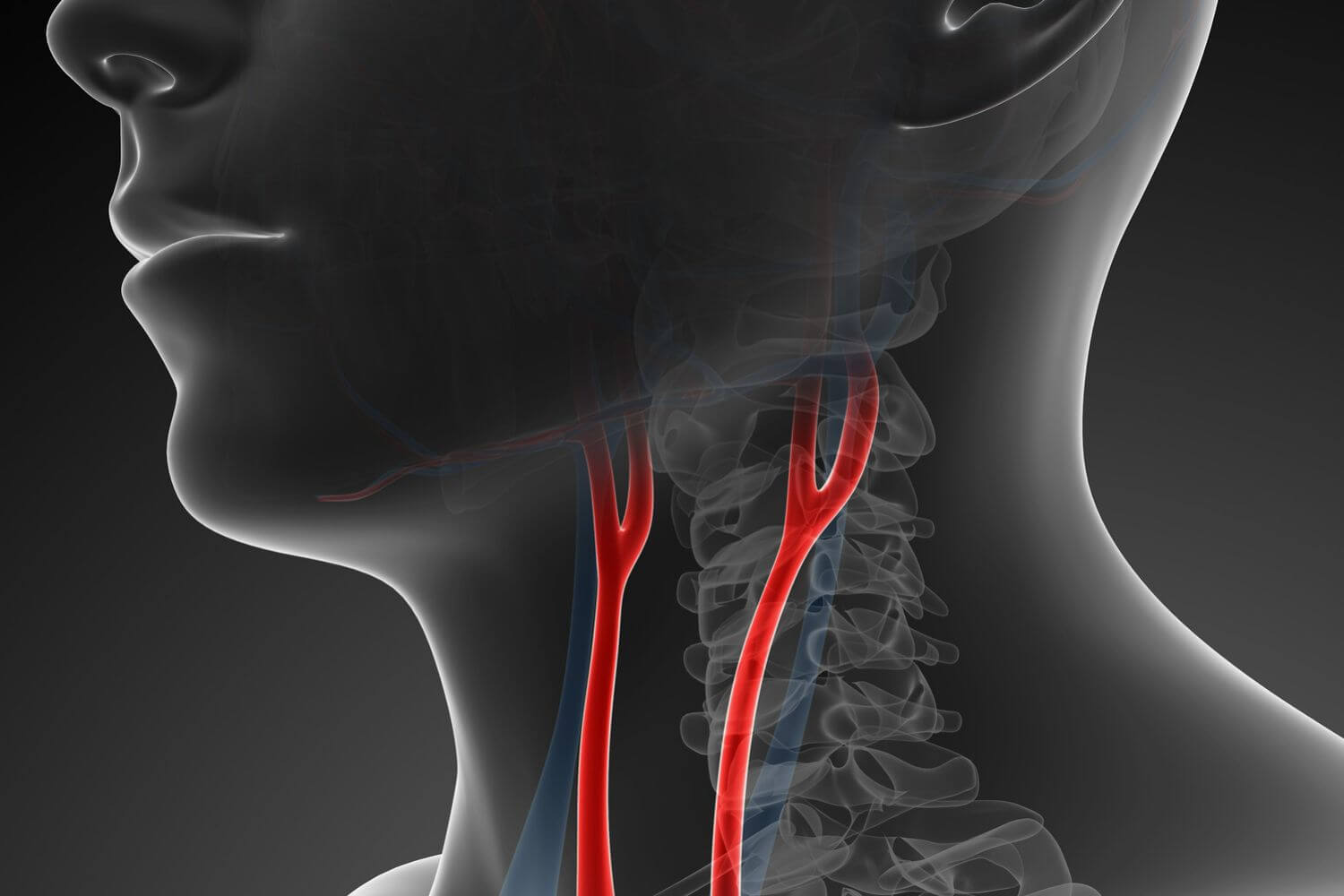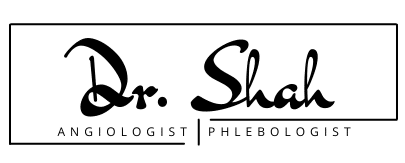arterial diseases
carotid artery disease
what is carotid artery disease?
Carotid artery disease occurs when fatty deposits (plaques) clog the blood vessels that supply blood to your brain and head (carotid arteries). Blocking increases the risk of stroke, a medical emergency that occurs when the blood supply to the brain is cut off or severely reduced. A stroke deprives your brain of oxygen. Within minutes, the brain cells begin to die. Stroke is the most common cause of death and the main cause of permanent disability.
Carotid artery disease develops slowly. The first sign that you have the disease may be a stroke or transient ischemic attack (TIA). A TIA is a temporary lack of blood flow to your brain.
Treatment for carotid artery disease usually involves a combination of lifestyle changes, medications and sometimes surgery.
when to see a doctor?
Seek emergency help if you have any signs or symptoms of a stroke. Even if they only last for a short time and then you feel normal, see a doctor right away. You may have experienced a TIA, an important sign that you’re at risk for stroke.
Talk to your doctor if you have risk factors for carotid artery disease. Even if you have no signs or symptoms, your doctor may recommend aggressively managing your risk factors to protect you from stroke. Seeing a doctor early increases your chances that carotid artery disease will be detected and treated before a debilitating stroke occurs.
What are the symptoms?
In its early stages, carotid artery disease often gives no signs or symptoms. The condition may go unnoticed until it is serious enough to deprive the brain of blood, causing a stroke or TIA.
Signs and symptoms of a stroke or TIA include:
- Sudden numbness or weakness in the face or limbs, often only on one side of the body;
- Sudden problems with speaking and understanding;
- Sudden vision problems in one or both eyes;
- Sudden dizziness or loss of balance;
- Sudden, severe headache for no known reason.
What are the reasons?
Carotid artery disease is caused by plaque buildup in arteries that supply blood to your brain. Plaques are clumps of cholesterol, calcium, fibrous tissue and other cellular debris that collect at sites of microscopic injury in the artery. This process is called atherosclerosis.
Carotid arteries that are clogged with plaques are stiff and narrow. Blocked carotid arteries have trouble delivering oxygen and nutrients to vital brain structures that are responsible for your daily functioning.

How to protect ourselves?
To prevent or slow the progression of carotid artery disease, consider the following suggestions:
- Do not smoke. Within a few years of quitting, an ex-smoker’s risk of stroke is similar to that for non-smokers.
- Maintain a healthy weight. Essentially, being overweight contributes to other risk factors, such as high blood pressure, cardiovascular disease, diabetes, and sleep apnea.
- Limit cholesterol and fat. In particular, reducing saturated fat can reduce plaque buildup in your arteries.
- Eat a variety of fruits and vegetables. They contain nutrients such as potassium, folate, and antioxidants that may protect against TIA or stroke.
- Limit salt. Excess salt (sodium) can raise blood pressure in people who are sodium sensitive. Experts recommend that healthy adults eat less than 1,500 milligrams of sodium per day.
- Exercise regularly. Exercise can lower your blood pressure, raise your high-density lipoprotein (HDL) cholesterol – the “good” cholesterol – and improve the overall health of your blood vessels and heart. It also helps to lose weight, control diabetes and reduce stress.
- Limit alcohol.
- Control chronic conditions. Controlling conditions like diabetes and high blood pressure helps protect your arteries.
Risk factors
Factors that increase the risk of carotid artery disease include:
- High blood pressure. Excess pressure on the walls of the arteries can weaken them and make them more vulnerable to damage.
- Tobacco use. Nicotine can irritate the inner lining of your arteries. Smoking also increases heart rate and blood pressure.
- Diabetes lowers your ability to process fat efficiently, putting you at greater risk of high blood pressure and atherosclerosis.
- High blood fat levels. High levels of low-density lipoprotein cholesterol and high levels of triglycerides, fats in the blood, promote plaque buildup.
- Family History. The risk of carotid artery disease is higher if a relative has atherosclerosis or coronary artery disease.
- Age. Arteries become less flexible and more susceptible to injury with age.
- Obesity. Being overweight increases your chances of high blood pressure, atherosclerosis and diabetes.
- Sleep apnea. Attacks of respiratory arrest at night can increase the risk of stroke.
- Lack of exercise. Contributes to conditions that damage your arteries, including high blood pressure, diabetes, and obesity.
Complications
Carotid artery disease causes about 10 to 20 percent of strokes. A stroke is a medical emergency that can leave you with permanent brain damage and muscle weakness. In severe cases, stroke can be fatal.
Carotid artery disease can lead to stroke by:
- Reduced blood flow. The carotid artery can become so narrowed by atherosclerosis that insufficient blood is able to reach parts of your brain.
- Torn plates. A piece of plaque can break off and reach smaller arteries in your brain. The plaque fragment can get stuck in one of these smaller arteries, creating a blockage that cuts off the blood supply to part of your brain.
- Blood clot blockage. Some plaques tend to crack and form irregular surfaces on the artery wall. Your body reacts as if to an injury and sends blood cells to help the clotting process in the area. The result can be a large clot that blocks or slows blood flow to the brain, causing a stroke.
Diagnostics
The initial examination will begin with a thorough medical history and physical examination, which usually involves listening for a sound (a bruit) above the carotid artery in your neck, a sound characteristic of a narrowed artery. Your doctor can then test your physical and mental abilities such as strength, memory and speech.
Diagnosis can proceed with:
- Ultrasound to assess blood flow and pressure in the carotid arteries.
- Ultrasound to assess blood flow and pressure in the carotid arteries.
- CT angiography or MR angiography, which provides additional imaging of blood flow in the carotid arteries. Contrast is injected into a blood vessel, and a CT scan or MRI collects images of your neck and brain.

treatment
The goal in treating carotid artery disease is to prevent stroke. The specific treatment depends on the degree of blockage in your carotid arteries.
If the blockage is mild to moderate, your doctor may recommend:
- Lifestyle changes to slow the progression of atherosclerosis. Recommendations may include quitting smoking, losing weight, eating healthy foods, reducing salt and exercising regularly.
- Drugs to control blood pressure or lower cholesterol. Your doctor may also recommend that you take aspirin or other blood-thinning medications daily to prevent blood clots.
If the blockage is severe or if you have already had a TIA or stroke, your doctor may recommend removing the blockage from the artery. Options include:
- Carotid endarterectomy. After making the incision along the front of your neck, the surgeon opens the affected carotid artery and removes the plaque. The artery is repaired either with stitches or with a graft.
- Carotid angioplasty and stenting. Under local anaesthetic, a tiny balloon is threaded with a catheter to the area of the blockage. The balloon is inflated to widen the artery and a stent is placed to keep the artery from narrowing again.
